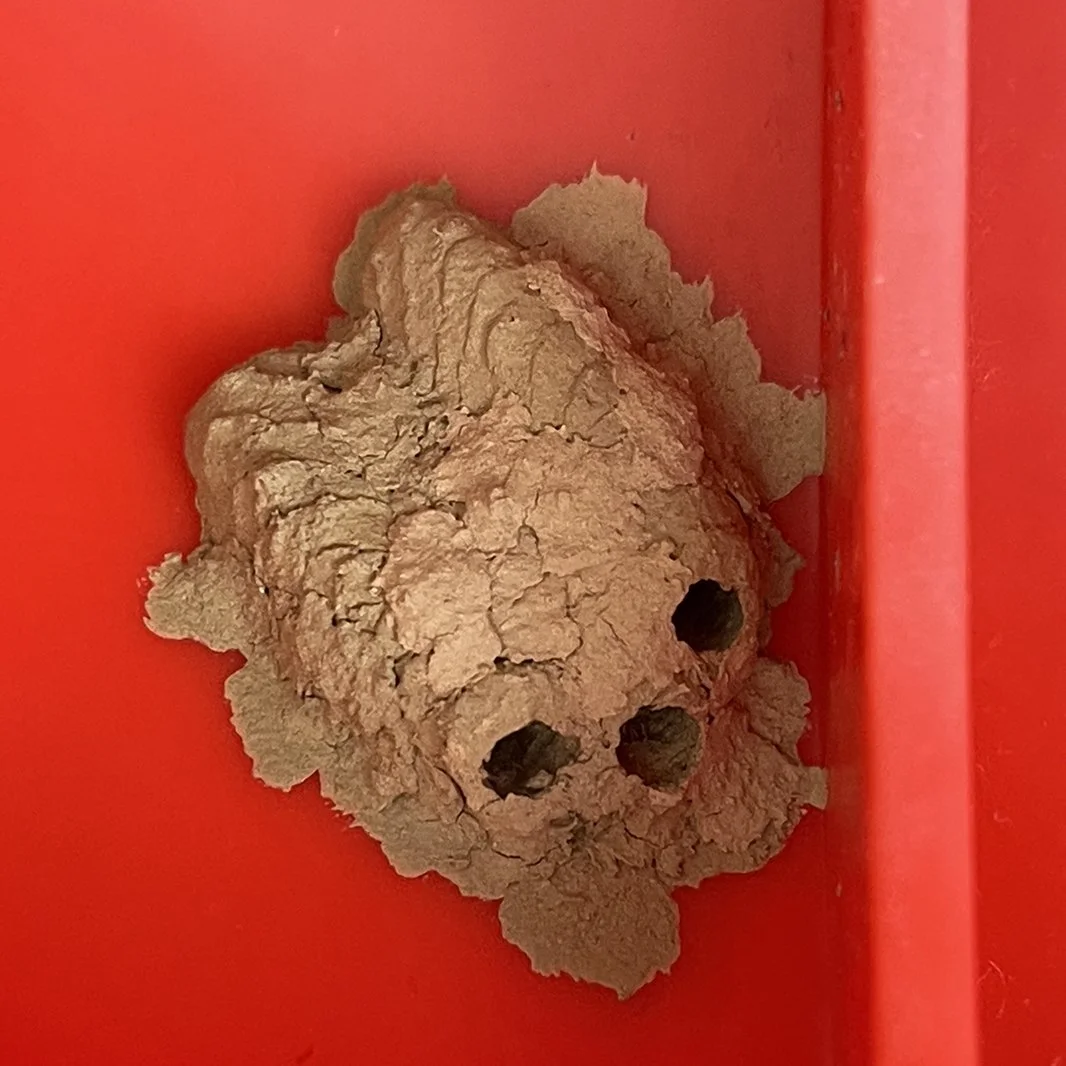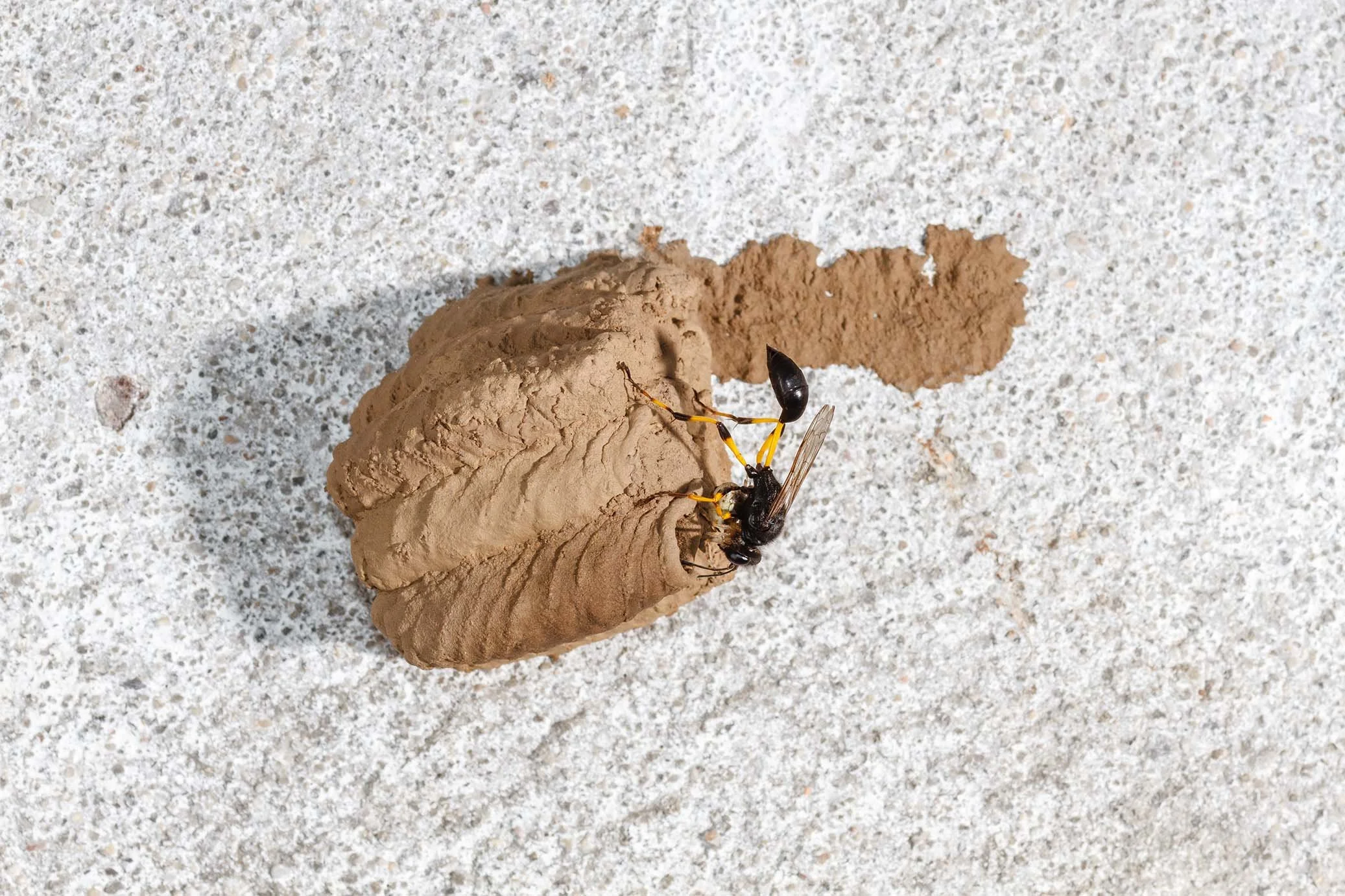MUD DAUBERS
Mud daubers are solitary wasps commonly encountered throughout Southern California, especially during the warm spring and summer months. Unlike social wasps, mud daubers do not live in colonies but instead work alone to build their nests and hunt for food. They are best known for their distinctive mud nests, which resemble elongated tubes or organ pipes and are often found attached to walls, eaves, ceilings of garages, sheds, or other sheltered structures. These nests are constructed by the female using mud balls she collects and carefully molds into place. Mud daubers play a beneficial role in natural pest control, as they prey primarily on spiders, including species like the black widow, which they paralyze and store inside their nests as food for their larvae. While mud daubers are generally non-aggressive, they can sting if handled or provoked, though such incidents are rare. Their docile nature and preference for avoiding human contact make them one of the least dangerous wasp species found near homes.



Nesting Habits
Female mud daubers build nests from mud, creating cylindrical tubes that resemble organ pipes. These nests are often found under eaves, porch ceilings, attics, or other protected spaces.
-
Under eaves and overhangs
Inside attics and wall voids
Beneath decks and railings
In garages and sheds
-
Spider Predation: Mud daubers primarily prey on spiders, including crab spiders, orb weavers, and jumping spiders. This behavior helps control spider populations around homes.
Each nest cell is provisioned with paralyzed spiders, serving as food for the developing larva. After sealing the cell with mud, the female moves on to construct additional cells.
Pollination: Adults feed on nectar from flowers, contributing to pollination.
Sting Risk and Human Interaction
Unlike social wasps, they are not aggressive and rarely sting. However, they may sting if handled or threatened. While their sting is typically mild, some individuals may still experience allergic reactions. Their presence can be alarming, but they pose minimal risk compared to more aggressive wasp species.
-
Aggression: Mud daubers are not aggressive and rarely sting humans. Stings typically occur only when the wasp is directly threatened.
Sting Symptoms: If stung, symptoms may include redness, swelling, and mild pain. Severe allergic reactions are rare but require immediate medical attention.
Prevention Tips
Preventing mud daubers starts with reducing access to nesting materials and entry points. Seal cracks and crevices around windows, doors, and vents, and install fine mesh screens to keep them out of structures. Removal of old mud nests is important to discourage return visits, as mud daubers often reuse nesting sites. Early detection and removal are key to long-term prevention.
-
Reduce Moisture: Adjust sprinklers to prevent excess moisture near structures.
Secure Trash: Use lidded trash bins and keep them closed to avoid attracting wasps.
Seal Entry Points: Install weather stripping around doors and windows, and seal holes around wires, conduits, and pipes leading into the structure.
Screen Openings: Properly screen garage vents, doors, and windows to prevent wasps from entering.
Remove Old Nests: After ensuring no active wasps are present, remove old nests to prevent re-infestation and discourage other pests from occupying them.


